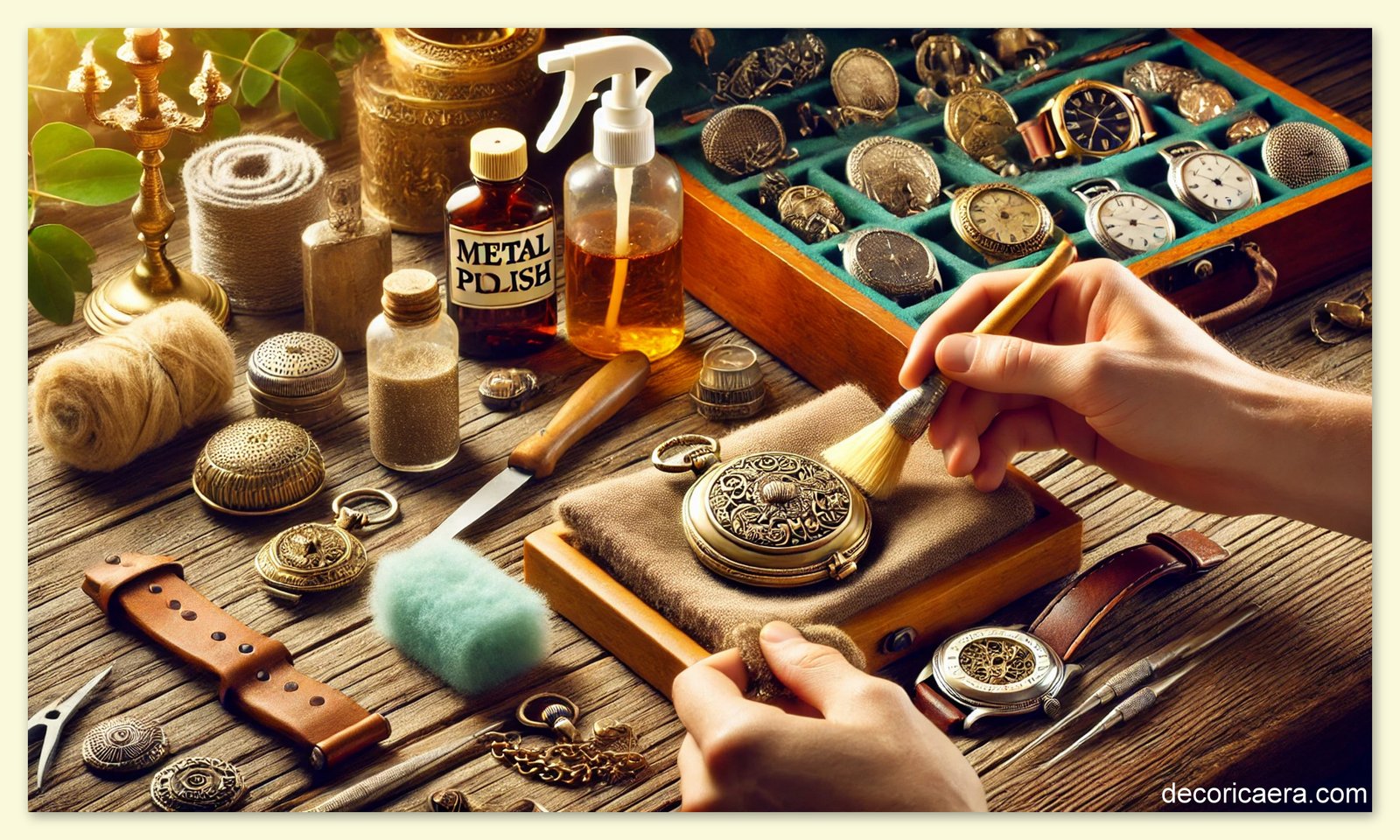Best Tools for Restoring Vintage Metal Accessories
Introduction
Revitalizing vintage metal accessories is a fulfilling but sensitive task that demands the appropriate tools. Whether you're reviving an old pocket watch, belt buckle, jewelry piece, or even antique car parts, proper restoration enhances both beauty and longevity.
Using the wrong tools can damage your vintage pieces, reducing their value and aesthetic appeal. In this guide, we'll explore the best tools for restoring vintage metal accessories, helping you preserve their charm and historical significance.
Table of Contents
1. Essential Cleaning Tools
2. Rust Removal Solutions
3. Polishing and Buffing Equipment
4. Protective Coatings and Sealants
5. Specialty Tools for Detailed Work
6. Pro Tips for Restoring Vintage Metal Accessories
7. FAQs
1. Essential Cleaning Tools
Before any restoration work, proper cleaning is crucial to remove dirt, grease, and old residues.
Microfiber Cloths & Soft Brushes
· Ideal for gently wiping dust and grime without scratching.
· Use soft-bristled brushes for delicate engravings.
Ultrasonic Cleaner
· A must-have for cleaning small, intricate accessories like watches and jewelry.
· Uses high-frequency sound waves to dislodge dirt without causing damage.
Mild Soaps & Cleaning Solutions
· A mixture of warm water and mild dish soap can clean most metal items safely.
· Avoid harsh detergents that can strip metal coatings.
Tips: Be sure to test any cleaning solution on a small, inconspicuous area prior to using it on the whole item.
2. Rust Removal Solutions
Vintage metal accessories often suffer from rust, which needs careful removal to avoid further deterioration.
White Vinegar & Baking Soda
· An effective natural rust remover. Soak small items in vinegar for a few hours and scrub with baking soda.
Evapo-Rust
· A non-toxic, biodegradable rust remover that works well on heavily corroded items.
Steel Wool & Wire Brushes
· Use fine-grade steel wool (0000) for light rust and wire brushes for tougher rust spots.
· Be cautious with delicate items to avoid scratching.
Tip: Following rust removal, make sure to rinse well and dry completely to avoid any new rust developing.
3. Polishing and Buffing Equipment
Once rust is removed, polishing restores the shine and luster of vintage metal accessories.
Dremel Rotary Tool with Buffing Attachments
· Great for detailed polishing of small or intricately designed accessories.
· Use soft polishing pads and gentle pressure.
Jeweler’s Rouge & Polishing Compounds
· Red rouge is perfect for gold and silver, while white rouge works well on aluminum and stainless steel.
Metal Polishes (Brasso, Autosol, Simichrome)
· These provide a brilliant shine and remove tarnish effectively.
Pro Tip: Always polish in circular motions to avoid streaks and maintain an even shine.
4. Protective Coatings and Sealants
Once polished, applying a protective layer helps preserve the restored metal accessory.
Renaissance Wax
· A museum-grade wax that prevents tarnishing and adds a subtle shine.
· Works great for jewelry, watches, and decorative metal objects.
Clear Lacquer or Metal Sealants
· Protects brass, copper, and silver from oxidation.
· Choose non-yellowing formulas for long-term clarity.
Pro Tip: Apply sealants in a well-ventilated area and let them dry completely before handling.
5. Specialty Tools for Detailed Work
For intricate metal accessories, these tools help with precision work.
Precision Needle Files
· Perfect for removing small scratches and smoothing edges on delicate items.
Engraving Pen or Fine-tip Dremel Bit
· Helps restore fine details on antique jewelry, belt buckles, and decorative metal pieces.
Handheld Magnifying Glass or Jeweler’s Loupe
· Ensures precision when working on tiny details and engravings.
Pro Tip: Work in a well-lit area with a magnifier to spot imperfections easily.
6. Pro Tips for Restoring Vintage Metal Accessories
· Know Your Metal Type: Different metals require different cleaning and polishing methods.
· Avoid Over-Restoration: Preserve the natural patina when possible to maintain authenticity.
· Use Gloves: Prevent fingerprints and oil transfer when handling restored pieces.
· Store Properly: Keep restored items in a dry, padded case to prevent future damage.
7. FAQs
Q1: Can I use household vinegar for rust removal?
Yes! White vinegar is an excellent natural rust remover, but always rinse thoroughly after use.
Q2: How do I prevent tarnishing after polishing?
Apply a protective wax like Renaissance Wax or store items in anti-tarnish pouches.
Q3: Is it safe to use a Dremel on delicate metal accessories?
Yes, but use low-speed settings and the correct buffing pads to prevent damage.
Q4: What is the most effective method for cleaning vintage silver jewelry?
Use a mix of mild dish soap and warm water, followed by a silver polish like Simichrome.
Q5: How do I restore antique brass without removing its patina?
Use a soft cloth and a mild brass polish, avoiding harsh abrasives.
Conclusion
Restoring vintage metal accessories is both an art and a science, requiring patience and the right tools. Whether you're working on jewelry, watches, or antique collectibles, using proper cleaning, rust removal, polishing, and protective techniques will ensure your items maintain their beauty for years to come.
Start with small projects, practice gentle restoration methods, and enjoy the satisfaction of bringing timeless treasures back to life!
Do you have a favorite tool for restoring vintage metal accessories? Share your experience in the comments







